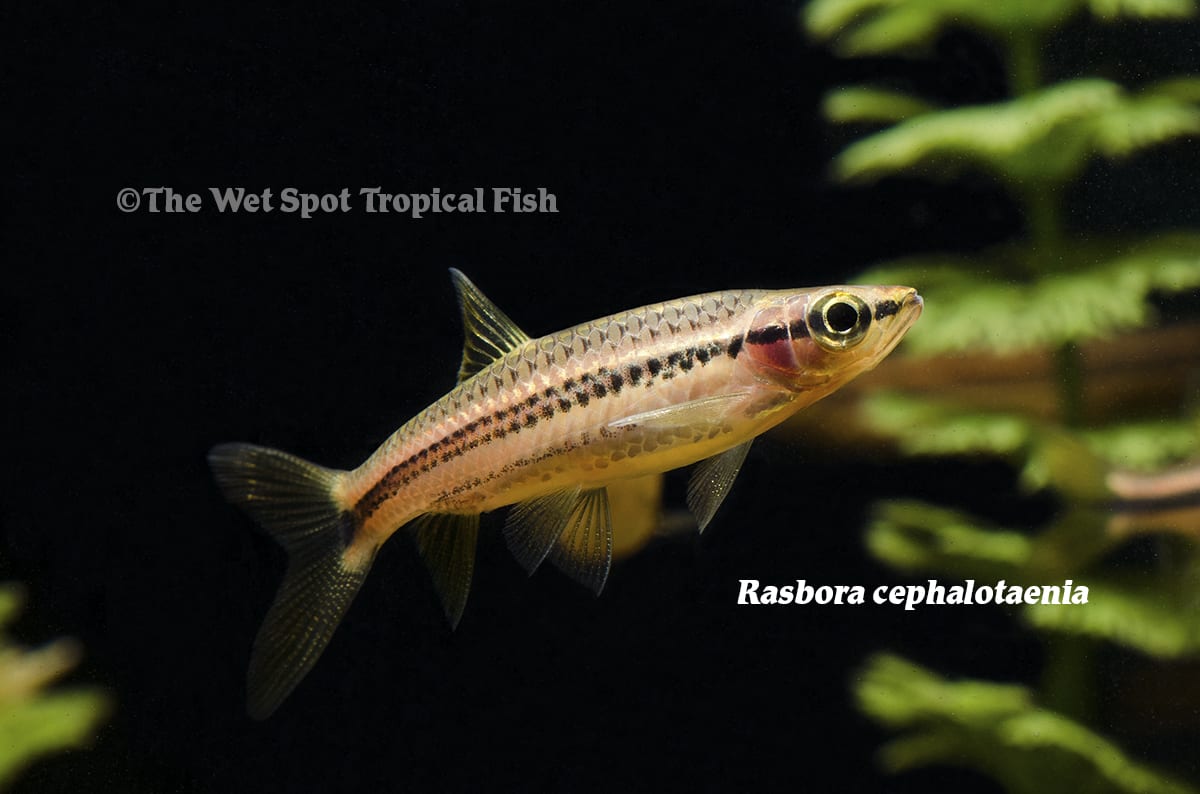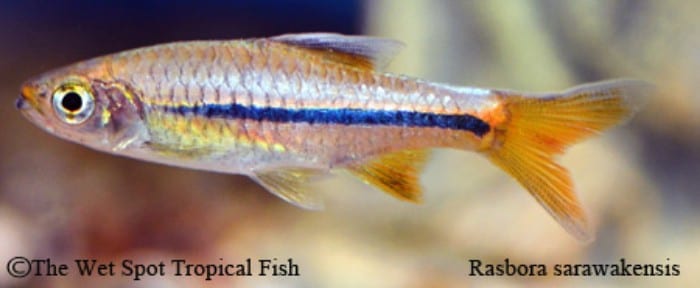School is in Session
School is in Session
Spring break is over, which means students all over the country are now counting down to their summer vacations. Before breaking out your bikinis and flippers to search for tropical fish in their natural habitats, we must remain like many of our tank favorites, in schools. In the context of freshwater fishtanks, schools can be viewed as lively, undulating swaths of color made up of several individuals acting as a single entity. With a variety of group behaviors, shapes, sizes, colors, and patterns, it’s no wonder small gems swim off the shelves! Some of our favorite team players include Hemigrammus filamentosus, Rasbora cephalotaenia, and Rasbora sarawakensis.
Scientific NameHemigrammus filamentosus
Common NamePhoenix Tetra
Temperature / pH75 to 78°F / 6.5 to 7.2 pH
Native LocationBrazil
Preferred DietOmnivorous
Soaring through the waters of the Rio Araguaya basin in Brazil, the chickens of the sea have nothing on H. filamentosus. Known as the “Phoenix Tetra”, this small schooling characin reach up to 1.5 inches in length and exhibit glorious red caudal and ventral fins, red eye rings that burn like the sun, and a striking black horizontal bar on their quick moving tails. When quickly swimming freely in large groups, these fish resemble the mythological creature they were named for, being reborn in flame. These tetras are very peaceful, and provide a great ornament to any community tank. For optimal personality, they should be kept in groups of 8 or more. Benthopelagic feeders, Phoenix Tetras are opportunistic omnivores that can be a variety of high quality flake and pellets, but should have regular supplementation of live and frozen fare. Tanks should have plentiful vegetation, and waters should be maintained with temperatures between 75 and 78°F, with a pH of 6.5 to 7.2, and hardness of 2 to 12 dH.
Scientific NameRasbora cephalotaenia
Common NamePorthole Rasbora
Temperature / pH72 to 77°F / 5.0 to 7.5 pH
Native LocationSoutheast Asia
Preferred DietSmall invertebrates
Along with Tetras, Rasboras are another great gregarious species to add to community tanks. Found in the peat swamps and blackwater habitats of ancient forests in Borneo, Malaysia, and Sumatra, R. cephalotaenia is a peaceful, hardy fish, perfect for Southeast Asian blackwater community tanks. Exhibiting shimmering silver bodies with black cross-hatched patterns, and yellow fins, these “Porthole Rasboras” have optimal coloration and behaviors when kept in conspecific groups of 6 or more. They do amazingly well alongside other similarly sized Rasboras, Botias, and Loaches. Biotope tank setup would include soft, sandy substrate with driftwood logs and branch tangles, plentiful aquatic vegetation, leaf litter, and low light, though these fish are found in a range of water conditions and habitats, and are generally quite hardy. Feeding on aquatic and terrestrial invertebrates in nature, Porthole Rasboras should be fed regular meals of bloodworm, daphnia, mosquito larvae, and brine for best coloration, in addition to high quality flake and granules. Optimal water conditions are acidic with pH between 5.0 and 7.5, temperatures of 72 to 77°F, and hardness between 1 and 12 dH.
Scientific NameRasbora sarawakensis
Common NameSarawak Rasbora
Temperature / pH72 to 78°F / 6.0 to 7.5 pH
Native LocationSoutheast Asia
Preferred DietSmall invertebrates
Another Southeast Asian Rasbora, that could swim happily alongside our Porthole friend, is Rasbora sarawakensis. Also known as the “Sarawak Rasbora”, these schooling swimmers are indigenous to slow-moving forest streams of Borneo. Reaching around 2 inches in length, these Rasboras have light-golden bodies with a horizontal silver-blue strip down their bodies. Optimal coloration and extraverted personalities are encouraged when kept in conspecific groups of 8-10 in any Southeast Asian community tank. Biotope setup for their tanks should include dark substrate, low light, dense vegetation, and floating plants with little to no filtration. This is an egg scattering species with no parental care, and in properly maintained biotope tanks, they will breed readily without human intervention. Groups are believed to feed exclusively on aquatic and terrestrial invertebrates, and should be fed regular live and frozen meals in captivity for optimal coloration in addition to normal meals of flake and granules. Sarawak Rasboras do best in waters with temperatures between 72 and 78°F, with a pH of 6.0 to 7.5, and hardness of 2 to 12 dH.
School doesn’t have to be boring, and neither do your tanks. Liven things up with a brightly colored fast moving and enthusiastic group of Rasboras and Tetras. With over a hundred to choose from, allow the Wet Spot to guide you to the best schooling fish option for you.


